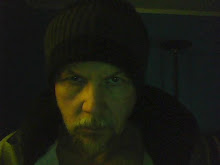This morning I was reading again in The ABCs of Robert Lax, a collection of critical and anecdotal essays concerning the literary theory and poetic works of Robert Lax. The essay by Nicholas Zurbrugg with which I began my reading today kicked off with a Lax quote which I had already encountered in several of the other essays in the collection:
Starting at the top and moving down, sometimes even syllable by syllable…it’s a little like movie film. ~ Robert Lax
Zurbrugg enlarges upon this quote thusly:
xxAs Robert Lax suggests in the lines above…his poetry frequently evinces a peculiarly vertical, cinematic quality, in the sense that it flows downwards, word after word – ‘even syllable by syllable’ – somewhat like the successive frames of a film.
xxConsidered in terms of this trait, the poetry of Robert Lax – and most particularly, those works that he entitles ‘Movies’ – seems to invite partial definition as one of a number of examples of verbal creativity elaborating a distinctively vertical aesthetic, as opposed both to the horizontal discourse of conventional poetry, and the multi-directional, predominately geometrical constellations of concrete poetry.
I decided to continue the series of experiments I have been making based on my appreciation of Lax’s work by composing a ‘cinematic’ poem, employing only one word per line. Many of Lax’s poems in this mode are like time-lapse nature films where one sees 20 seconds of spring unfolding in all its busy perfusion, followed by 40 seconds of quivering summer, followed by 20 seconds of brightly desiccating and molting autumn, followed by 30 seconds of successive sheets of brilliant snow. My concept of a good film, however, is one that narrates a story. So the vertically oriented, ‘cinematic’ poem which I wrote does just that:
artist > shaman > theologian
first
let
there
be
fire
primordial
light
painting
the
cave’s
stone
walls
with
shadows
of
human
form
then
the
sooty
of
the
hand
which
next
would
outline
the
icons
of
great
beasts’
deaths
at
the
hand
of
the
hunter
a
correspondence
made
between
the
mental
conjuring
of
the
image
and
the
providential
guidance
of
the
hunter’s
arrow
thus
art
becomes
magic
becomes
religion
becomes
faith
man’s
transcendence
Having worded this piece to my satisfaction, I began considering that a celluloid film does not, as a physical object, actually move on a straight vertical track; it winds its way over the spools, off the reel, and behind the light and lenses of a projector. How to depict this, using the same words? I hit upon the device of arranging the words in four columns, using a boustrophedonic (‘as the ox ploughs’) orientation. But, in keeping with the cinematic concept, the poem would be arranged in vertical columns, rather than in horizontal lines. I constructed the poem using the ‘columns’ page set-up of Microsoft Word. Since this would not transfer to any of the online templates available at the various sites on which I wanted to share these pieces, I scanned the boustrophedonic version, after marking it up to demonstrate the directions in which the columns should be read:

I personally find this latter version to be more satisfying, in that the words of right-hand column climb upwards to the final word: transcendence, rather than descending to it, as they do in the strictly vertical format. This upward thrust to the word ‘transcendence’ seems most appropriate.
